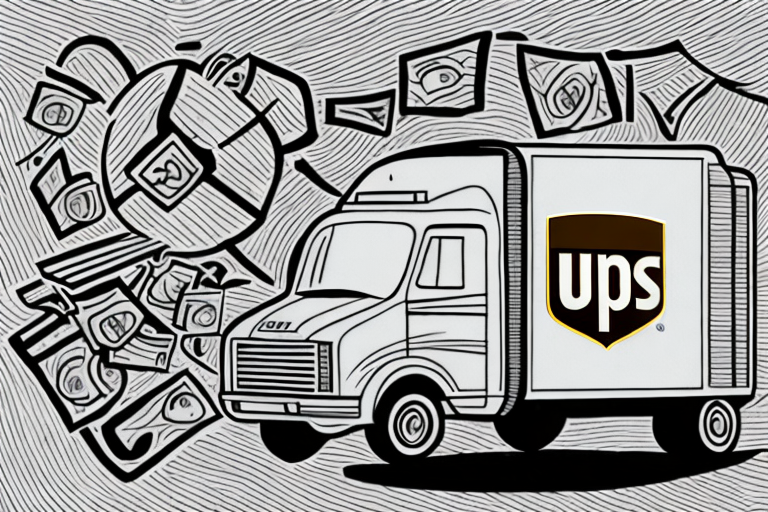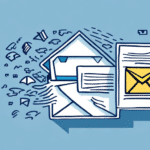How to Ensure Your Mail Is Properly Insured
Sending mail is a common activity for millions, whether for personal or business purposes. However, packages or letters can sometimes get lost, damaged, or stolen during transit. Mail insurance offers an extra layer of protection for your valuable items. This article explores the importance of insuring your mail, the types of mail that can be insured, coverage options, choosing the right policy, packaging and labeling tips, and steps to take in case of lost or stolen items.
Why Insurance for Your Mail is Important
Assuming your mail will arrive safely and on time is common, but various factors can disrupt this expectation, including theft, accidents, human error, and adverse weather conditions. According to the United States Postal Service, mail insurance protects you from financial loss due to such incidents.
Insurance offers peace of mind, reducing the stress associated with sending important documents or valuable items. Additionally, many insurance policies provide tracking and delivery confirmation services, enhancing security and reliability. This is particularly beneficial for businesses or individuals who regularly send time-sensitive or high-value mail.
Types of Mail That Can Be Insured
Most carriers, including USPS, FedEx, and UPS, allow a wide range of mail types to be insured, such as packages, envelopes, and letters. However, each carrier has specific restrictions and guidelines, so it’s essential to review their policies before insuring your mail.
When insuring packages, be aware that carriers have different maximum coverage limits. For instance, USPS offers insurance coverage up to $5,000 for most packages. Understanding the value of your package and selecting a carrier that provides adequate coverage is crucial.
High-value items like jewelry or artwork may require additional documentation, such as receipts or appraisals, to confirm their value. Ensuring you have the necessary documentation will facilitate the insurance process.
Understanding Coverage Options for Your Mail
Mail insurance typically offers three types of coverage: basic, standard, and extended.
- Basic Coverage: Covers loss or damage up to a specified amount.
- Standard Coverage: Offers higher coverage limits than basic.
- Extended Coverage: Provides the highest limits and protects against a broader range of risks.
Not all items are eligible for coverage, and certain items may necessitate additional proof of value. Some carriers also offer optional services like signature confirmation or enhanced tracking, which provide added security for valuable shipments.
Choosing the Right Insurance Policy for Your Mail
To select the best insurance policy, compare different carriers and their offerings. Consider factors such as coverage limits, premium costs, deductibles, and the extent of protection provided. Reading customer reviews and thoroughly understanding the policy’s terms and conditions are essential steps in making an informed decision.
Assess the level of protection each policy offers. While some policies may cover only basic damages like loss or theft, others may offer comprehensive coverage, including damage during transit or natural disasters. Align the policy features with your specific needs to ensure adequate protection.
Calculating the Value of Your Mail for Insurance Purposes
Determining the value of the items you’re sending is a critical step before insuring your mail. Calculate the total cost of the contents and include any shipping fees. Carriers may have specific guidelines on what constitutes the item's value, so it's important to follow their rules to ensure accurate coverage.
Documentation such as photos, receipts, or proof of purchase can support your claim in case of loss or damage. For valuable items, carriers might require an appraisal or invoice to verify the item's worth. Preparing these documents in advance can streamline the insurance process.
Tips for Properly Packaging and Labeling Insured Mail
Proper packaging and labeling significantly affect the safe delivery of your mail. Use sturdy materials and ensure that labels are clear and contain accurate recipient information. Including a personal note can aid carriers if issues arise during transit.
For fragile items, use extra cushioning and mark the package as "fragile" to prompt careful handling. Perishable items should be packaged with appropriate materials to maintain their condition during transit.
Be aware of carrier-specific packaging and labeling requirements, especially for hazardous materials. Adhering to these guidelines helps prevent delays and ensures the safety of your shipment.
Common Mistakes to Avoid When Insuring Your Mail
Avoid underestimating the value of your contents, as this can result in inadequate coverage. Ensure that your mail is properly packaged and labeled to minimize the risk of damage or loss. Additionally, always read the terms and conditions of your insurance policy to understand the coverage and any exclusions.
Choosing the wrong type of insurance can leave valuable items insufficiently protected. For high-value shipments, consider purchasing additional insurance beyond standard options. Verify that your chosen policy covers the specific types of items you are sending.
Remember, insurance does not guarantee delivery. Proper packaging and labeling are essential to reduce the likelihood of damage during transit.
What to Do in Case of Lost, Damaged, or Stolen Insured Mail
If your insured mail is lost, damaged, or stolen, take immediate action. File a claim with your carrier as soon as possible, providing all necessary documentation, such as receipts and proof of value.
Inform the recipient about the incident, as they might need to contact their carrier or file a claim from their end. If theft is suspected, report the incident to local authorities and provide any relevant evidence to support your case.
Comparing Insurance Rates and Plans for Different Carriers
Researching and comparing insurance plans from various carriers can help you find the best deal. Evaluate quotes, coverage options, and additional fees or surcharges. It's important to consider the carrier's reputation and customer service quality, not just the cost.
Some carriers offer discounts for bundling multiple insurance types, such as combining mail insurance with home or auto insurance. Carefully review the terms and conditions of each plan to ensure it meets your needs and budget.
Understanding the Claim Process for Insured Mail
Filing a claim for lost, damaged, or stolen mail involves several steps. You will need to provide documentation, including receipts and proof of value. The processing time for claims varies by carrier, so patience and persistence are key.
Ensure you follow the carrier’s specific procedures for filing claims to avoid delays. Keeping records of all communications and submissions will support your claim and expedite the resolution process.
Frequently Asked Questions About Insuring Your Mail
Here are some common questions regarding mail insurance:
- What items can and cannot be insured?
- What is the maximum amount I can insure for?
- How do I file a claim?
- What type of documentation will I need to provide?
- How long does it take to receive a claim payment?
Always consult with your carrier and thoroughly read your insurance policy to address these questions and ensure comprehensive coverage.
Expert Advice on Maximizing the Benefits of Insured Mail
To maximize the benefits of mail insurance, utilize tracking and delivery confirmation services. These tools provide real-time updates on your mail’s status, enhancing security and accountability.
Researching and selecting a carrier with a strong track record for reliability and customer service can further ensure the safe delivery of your mail. Reading reviews and seeking recommendations can guide you in choosing a trustworthy carrier.
The Importance of Reading the Fine Print in Insurance Policies
Carefully reviewing the terms and conditions of your insurance policy is crucial. Understanding what is covered and what is excluded helps you avoid unexpected issues. Be aware of any restrictions or limitations, and take note of exclusions that might affect your coverage.
Some policies may have specific requirements or conditions that must be met for a claim to be valid. Knowing these details in advance will help you take the necessary steps to ensure your mail is fully protected.
How to Save Money on Insurance Premiums While Still Protecting Your Mail
There are several strategies to save on insurance premiums without compromising protection:
- Bundle Insurance: Combine mail insurance with other types of insurance, such as home or renter's insurance, to receive discounts.
- Secure Packaging: Properly package and label your mail to reduce the risk of damage, which can lower insurance costs.
- Compare Carriers: Shop around and compare different carriers to find the most cost-effective insurance options.
By following these tips and thoroughly researching your options, you can ensure your mail is adequately protected while keeping insurance costs manageable.
Conclusion
Properly insuring your mail is essential to safeguard valuable items and important documents. By understanding the importance of mail insurance, selecting the right coverage, and following best practices for packaging and labeling, you can minimize the risks associated with mailing. Additionally, being prepared to handle claims and knowing how to save on premiums will further enhance the protection and value of your mail insurance.






















